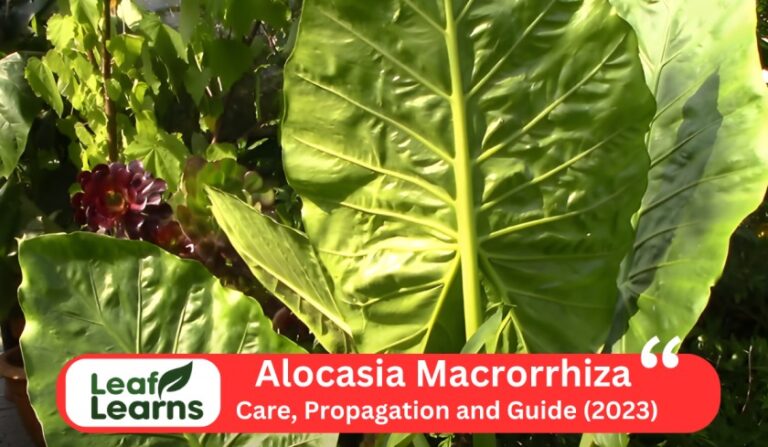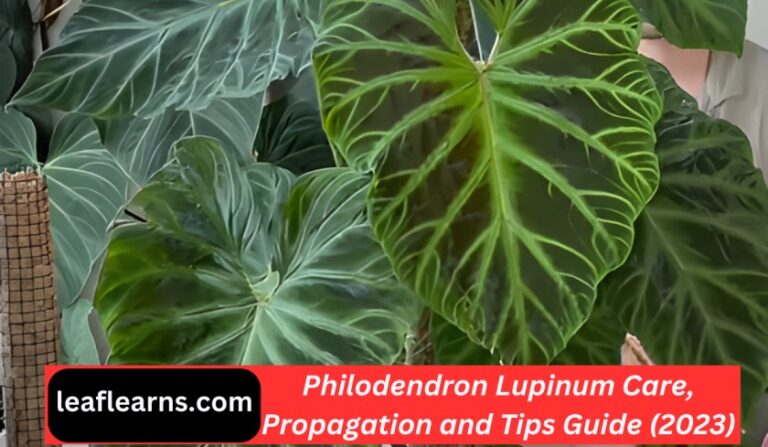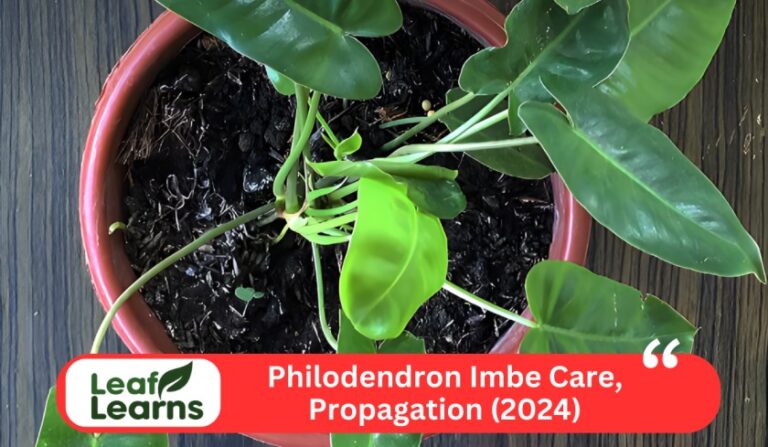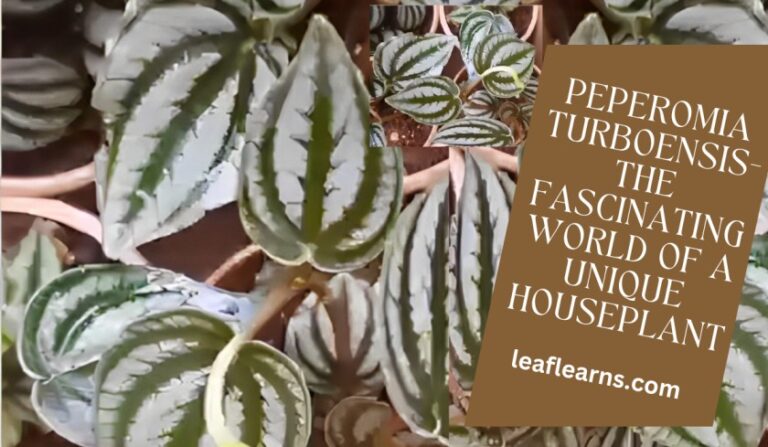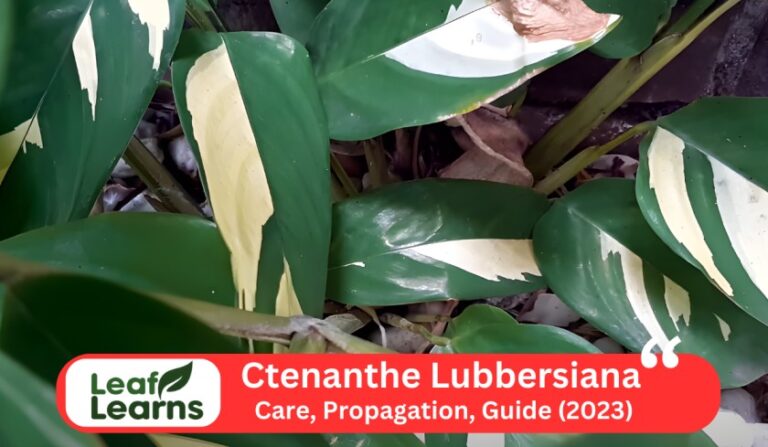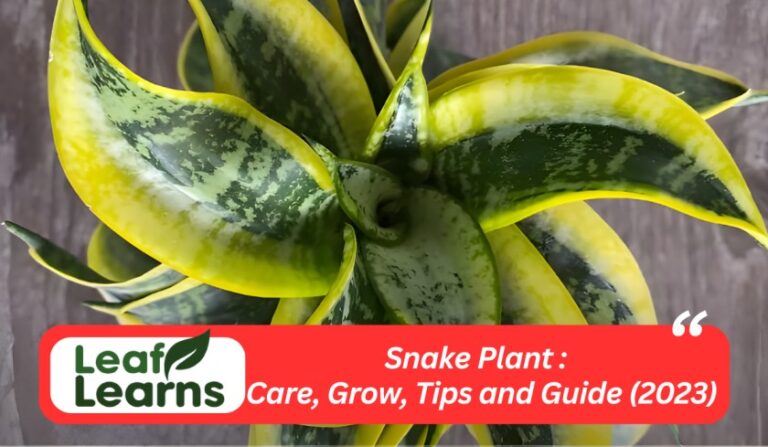Monstera Pinnatipartita Care and Propagation (2023)
In Central and South America, Monstera Pinnatipartita grows in a variety of beautiful and rare forms. In spite of its close relationship with the more common Monstera Deliciosa, it boasts a number of distinctive traits that make it valuable to plant collectors.
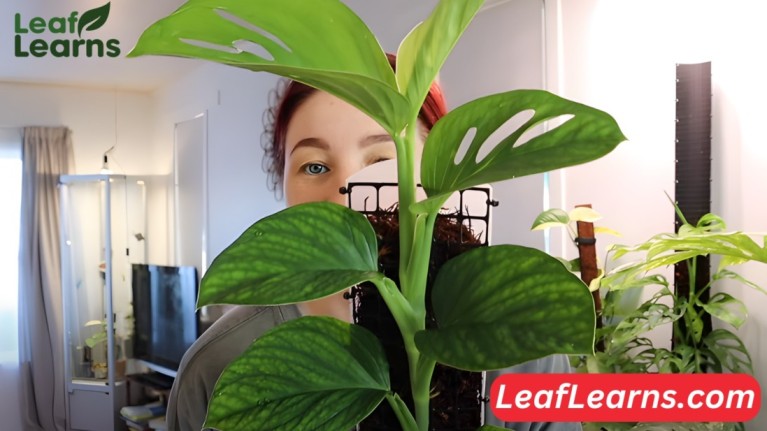
Contents
- 1 Brief Overview
- 2 Importance of Proper Care
- 3 Background and Origin
- 4 Key Tips for Successful Care
- 5 Monstera Pinnatipartita Care
- 6 Pruning
- 7 Propagation Methods
- 8 Potting and Repotting
- 9 Identification and Description
- 10 Leaf Characteristics
- 11 Common Diseases
- 12 Common Pests
- 13 Treatment Options
- 14 Common Problems and Solutions
- 15 Pinnatipartita Varieties
- 16 Toxicity of Monstera-pinnatipartita
- 17 Comparison With Other Species
- 18 Uses or Benefits
- 19 Global Cultivation and Reach
- 20 Enthusiast’s Guide: Artful Care, Varieties, and Challenges
- 21 Conclusion
- 22 FAQs
Brief Overview
When grown in ideal conditions, Monstera Pinnatipartita can reach up to 10 feet tall. There are large, heart-shaped leaves with deep divisions that give them a lacy or fenestrated appearance.
When the leaves are young, they are solid green, but as they mature, holes and slits appear, creating an eye-catching pattern.
Importance of Proper Care
Despite its easy care, this plant requires some specific conditions to thrive. Conditions that are warm and humid are ideal for it, as well as bright, indirect light.
The soil should be drained a bit between waterings, but waterings should be regular. Spring and summer are the best times to fertilize this plant since it is a heavy feeder.
| Common Name | Philodendron Silver Queen |
| Scientific Name | Monstera-Pinnatipartita |
| Family | Araceae |
| Origin | Central and South America |
| Plant Type | Climbing |
| Size | Up to 6 feet |
| Leaf Colour | Dark Green |
| Leaf Size | Up to 2 feet |
| Flower | Rarely blooms |
| Light | Bright, indirect light |
| Water | Seasonal; avoid overwatering |
| Soil | Well-draining mix |
| Temperature | 65-85°F (18-29°C) |
| Humidity | 60-80% |
| Fertilizer | Balanced liquid monthly |
| Propagation | Stem cuttings, air layering, Water propagation |
| Pruning | Optimal for growth and shape |
| Pests | Mealybugs, spider mites, scale insects |
| Toxicity | Mildly toxic to pets and humans |
| Uses | Indoor decor, ornamental plant |
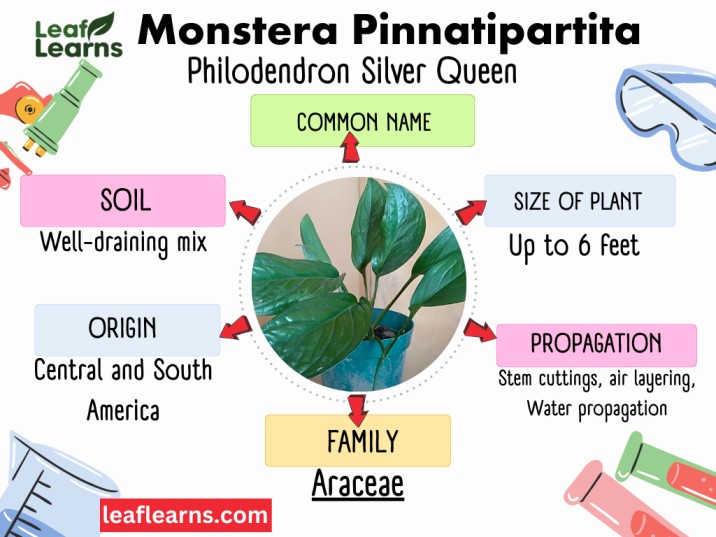
Background and Origin
Historical Background of Monstera-Pinnatipartita
There is an intriguing historical narrative behind pinnatipartita plant, a beautifully lobed climbing plant with a captivating climber.
This tropical gem was brought to Europe by botanist Eduard Friedrich Poeppig in the 19th century and gained acclaim for its spectacular foliage and exotic appeal.
Mid-century modern design became synonymous with it in the mid-20th century, when it became a coveted houseplant and a symbol of mid-century modern architecture.
Geographic Origin and Natural Habitat
Tropical rainforests of Central and South America are the home of Monstera-pinnatipartita, which thrives in warm, moist conditions. Tropical rainforests offer a refuge for it in the understory, where it climbs up towering trees to reach the sun’s dappled rays.
Thru its aerial roots, which extend from the stems, the plant can reach impressive heights and provide support to trees.
As a key component of the intricate fabric of life in the tropical rainforests of Colombia, Ecuador, and Peru, pinnatipartita has a diverse natural habitat.
Key Tips for Successful Care
- A bright, indirect light source is ideal for pinnatipartita plant. Its delicate leaves can be scorched by direct sunlight.
- When the top inch of the soil feels dry, water thoroughly once a week or every two weeks. It can grows best in moist soil, but overwatering can cause root rot.
- During spring and summer, this plant should be fertilized once a month with a balanced liquid fertilizer diluted to half strength.
- To promote better photosynthetic efficiency, wipe the leaves with a damp cloth to prevent dust accumulation.
- Every two or three years, pot up your Monstera-pinnatipartita in a larger pot and make sure the potting mix drains well.
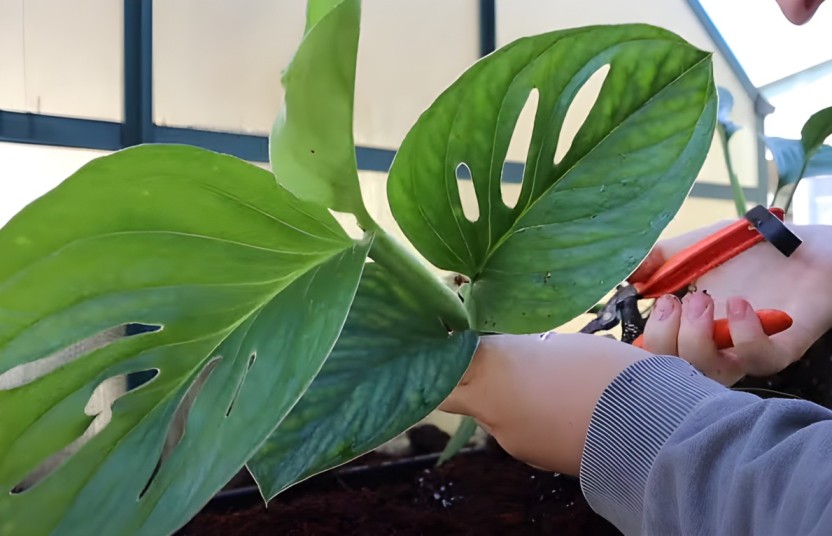
Monstera Pinnatipartita Care
Water Requirement
Summer: If the weather is hot and sunny, water your Monstera thoroughly once or twice a week, allowing the soil to dry slightly between each watering.
Winter: The soil dries out more deeply in the winter because of dormancy, so water sparingly.
Autumn: Reduce watering to once every two weeks or once a week as temperatures cool.
Spring: Water once or twice a week as soon as spring arrives.
Factors Affecting Watering
- The larger the pot, the more moisture it retains, so less watering is needed.
- Soil stays moist longer when there is high humidity because it reduces evaporation.
- Depending on the symptoms of stress, plants may require more or less water.
Watering Tips
- Ensure that excess water is drained freely by watering thoroughly.
- It is important not to overwater your plants, as this can lead to root rot.
- If you want to minimize evaporation during summer, water in the morning or evening.
- To warm up the soil in winter, water during the day.
Lighting Requirements
Pinnatipartita plant thrives in bright indirect light thanks to its deeply lobed leaves. In the same way that our bodies are fuelled by sunlight, Monstera-pinnatipartita produces its vibrant leaves with the help of sunlight.
Autumn: Provide bright, indirect light as the summer fades into autumn. As daylight hours shorten, growth may slow.
Summer: Your Monstera will benefit from receiving filtered light throughout the day by placing it near a west- or east-facing window during the summer months. Its delicate leaves can be scorched by direct sunlight.
Winter: To maintain healthy growth in winter, use a grow light to supplement sunlight.
Spring: Prepare your Monstera for the vibrant intensity of summer by gradually increasing light exposure.
Light preferences
- Ideal Light: Bright, indirect light
- Avoid: Direct sunlight
- Supplemental Light: Grow light during low-light periods
Location
- A window facing east or west is the best place to put it
- Ensure that the plant receives even lighting by rotating it regularly
- Plant growth should be observed and light exposure adjusted accordingly
Soil Requirement
A Monstera-pinnatipartita requires a specific soil mix to thrive, just like we humans need specific dietary requirements. For optimal growth, your plants’ roots need a soil that provides nutrients, aeration, and drainage.
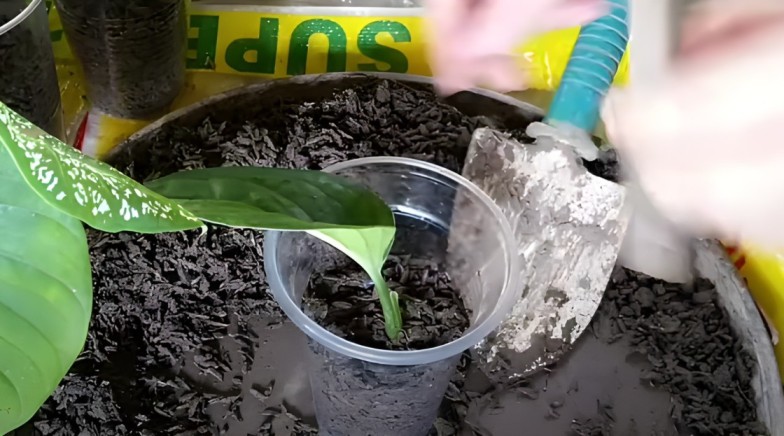
Epiphytic plants like pinnatipartita plant grow on other trees or structures in their natural habitat. It absorbs moisture and nutrients from the air through its aerial roots.
Providing these aerial roots with opportunities to grow is essential when caring for your Monstera. To encourage them to climb, mist them regularly or provide them with a moss pole.
For Monstera-pinnatipartita, it’s crucial to have an airy, well-draining soil mix. Perlite, peat moss, and coco coir or orchid bark provide the perfect balance of drainage and moisture retention. Adding compost will also provide extra nutrients.
Moisture, but not sogginess, is preferred by Monstera-pinnatipartita. Water the soil only when it is dry between waterings. Summers may require more frequent watering, while winters may require less.
Temperature Requirment
It prefers warm, humid conditions mimicking its native rainforest habitat, which is why Monstera pinnatipartit is a tropical charmer with deeply lobed leaves.
The Monstera-pinnatipartita thrives in a temperature range that is comfortable for it, just as our bodies do when they are kept at a comfortable temperature.
Summer: Be sure to maintain a comfortable temperature between 70-85°F (21-29°C). A Monstera should not be placed near vents or drafty windows.
Fall: Lower the temperature gradually as autumn approaches to around 65-75°F (18-24°C).
During winter, temperatures around 60-65°F (15-18°C) are ideal for dormancy. Keep your temperature above 55°F (13°C).
Winter: Continue to increase the temperature until spring arrives, at 65-75°F (18-24°C).
Humidity Requirement
This type of plant thrives in high-humidity environments, usually between 60 and 80%.
Maintain humidity levels around 60% during the hot, dry summer months. You can increase humidity by using a humidifier or a pebble tray filled with water.
In autumn, humidity levels should remain around 50% as temperatures cool and humidity naturally increases.
The winter months should be humid, aiming for around 40%.
In preparation for summer’s higher humidity, gradually increase humidity levels during spring.
Boosters of humidity
- Keep your Monstera’s air moist with a humidifier.
- Put the plant on a pebble tray filled with water and allow the humidity to build up through evaporation.
- Plants that like humidity should be grouped with Monstera to create a microclimate with a higher humidity level.
- If the weather is dry, mist the leaves regularly.
Fertilizer Requirement
In order for Monstera to flourish and maintain its stunning foliage, fertilization is an essential part of the care process.
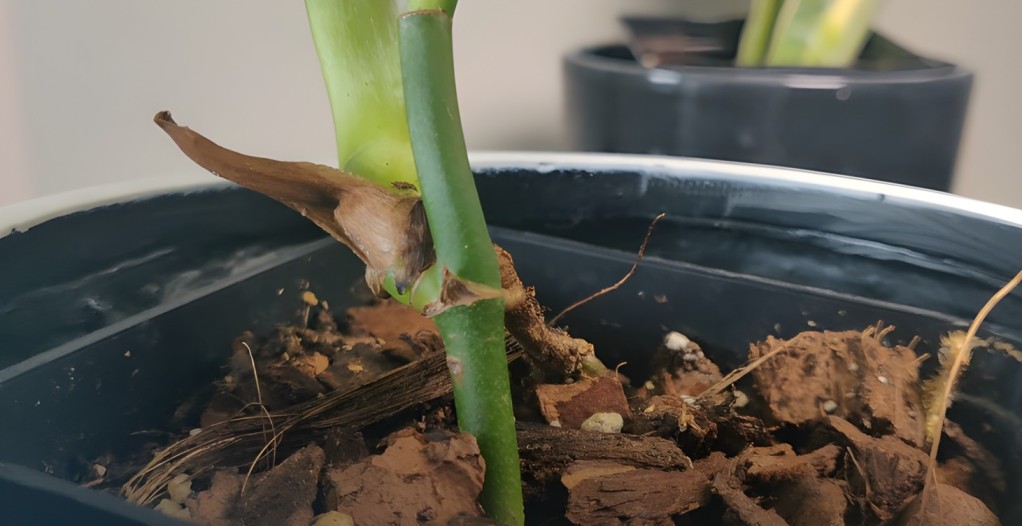
A balanced liquid fertilizer diluted to half strength should be applied once a month during the summer growing season. After watering, apply it to the soil.
Fertilize every two months or as needed as the summer’s heat fades into fall.
There is no need to fertilize in winter when plants are dormant. Rest and conserve energy by allowing your Monstera to rest.
Fertilize monthly once the spring season reawakens to support renewed growth.
Fertilizer Schedule
- Summer: Once a month
- Fall: Every two months or as needed
- Winter: Not necessary
- Spring: Once a month
Suitable Fertilizers
- The NPK ratio of this liquid fertilizer is 20-20-20
- Providing lush leaf growth with nitrogen and phosphorus, fish emulsion is a rich source of these elements
- Organic fertilizer containing a high level of nutrient content, worm castings promote healthy plant growth and soil health
- This plant is beneficial to its overall health when it is treated with seaweed extract, which is rich in nutrients and trace minerals
- An extended supply of nutrients is provided by slow-release granular fertilizer
Fertilizer Choice
- Balanced Liquid Fertilizer: Dilute to half strength
- Avoid: Overfertilization, which can damage roots
Signs of Fertilization Needs
- Symptoms of nutrient deficiencies include pale or yellowing leaves.
- Growth that is vibrant and consistent suggests that the plant is receiving adequate nutrition.
Pruning
Tropical beauty can be enhanced with a few careful snips. By promoting healthy growth, maintaining a balanced shape, and enhancing the overall aesthetics, you can promote a lush, lush appearance.
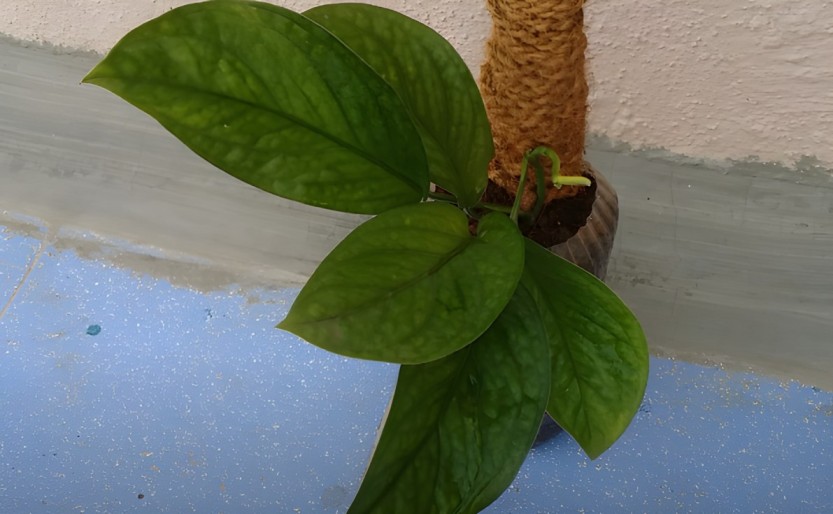
Importance of Pruning
The purpose of pruning is to direct energy towards healthy growth by removing unwanted or damaged foliage. Furthermore, this promotes bushy growth, air circulation, and light penetration, leading to a thriving Monstera plant.
Pruning Tips for Optimal Growth
- Inspect leaves for brown spots, tears, or pest or disease signs. Discard these leaves.
- Maintain a balanced form by trimming leggy stems to promote bushier growth.
- Make a decision about keeping or removing aerial roots. You can trim them if you want, or add them as an aesthetic element.
- Use sterilized pruning knives or shears to prevent the spread of disease.
- When to prune: Spring and summer are the best seasons for pruning.
- Follow Monstera’s response when pruning: Adjust your pruning techniques accordingly.
- Plants can be stressed by overpruning, resulting in decreased growth.
- Make pruning fun: Make your Monstera unique and vibrant by enjoying the process of pruning.
Propagation Methods
Here’s a Briefly explain propagating this stunning plant using two popular methods: stem cuttings, air layering and through water
Stem Cuttings
Monstera_pinnatipartita is propagated most commonly by stem cuttings. To get started, follow these steps:
- Prepare Supplies: Pruning shears with sharp and clean edges, rooting hormone (optional), a small pot with drainage holes, well-draining potting mix, and a clear plastic bag to protect the plants.
- Select a Healthy Stem: Make sure that you choose a stem that has two nodes, where the leaves emerge. In order to increase the surface area for root development, cut the stem slightly below a node, making an angle.
- Remove Excess Leaves: To prevent them from rotting in the soil, remove any excess leaves from the bottom half of the cutting.
- Dip in Rooting Hormone (Optional): Rooting hormone can be applied to the cut end of the stem to accelerate root development.
- Plant the Cutting: Make a hole in the center of the pot and fill it with potting mix. Ensure that the nodes of the cutting are below the surface of the soil before inserting it into the hole.
- Water the Cutting: Allow excess water to drain from the pot after thoroughly watering it.
- Increase Humidity: It is best to cover the pot with a clear plastic bag or humid dome to promote root growth.
- Position in Bright Indirect Light: Place the pot in a location with bright indirect light and avoid direct sunlight.
- Monitor Rooting: Regularly monitor the rooting process. Pull the cutting gently after a few weeks. The presence of resistance indicates the presence of roots.
- Pot Up: The plant can be transferred into a larger pot with fresh potting mix once the roots are well-established, typically within 6-8 weeks. Take off the humidity dome or plastic bag once the roots are fully developed.
Air Layering
Air layering is another effective method for propagating pinnatipartita plant, particularly for stems that are too high on the plant for stem cuttings. Here’s a step-by-step guide:
- Gather Supplies: Pruning shears that are sharp and clean, sphagnum moss, plastic wrap, and twine or tape are all you need to make the rope.
- Select an Air Layering Point: Make a shallow cut just below the node of a healthy stem with a node.
- Apply Sphagnum Moss: Spread moist sphagnum moss over the cut area to keep it in place.
- Secure the Moss: Wrap the sphagnum moss tightly with twine or tape and cover it with a plastic bag.
- Maintain Humidity: Mist the sphagnum moss regularly to maintain moisture.
- Monitor Rooting: Check for root development after a few weeks. The plastic bag or wrap should be removed once roots start appearing, typically within six to eight weeks.
- Pot Up: Put in a pot with fresh potting mix the newly rooted air layering.
Water Propagation
Before you begin, gather the following supplies:
- Healthy Monstera_pinnatipartita stem cutting
- Sharp knife or pruning shears
- Clean glass jar or container
- Fresh water
Preparing the Stem Cutting
- Make a clean cut: A clean cut below a node should be made with a sharp knife or pruning shears.
- Remove lower leaves: Trim the stem cutting’s bottom 2-3 inches of leaves.
Water Propagation
- Make sure the water in the jar or container is at room temperature when you fill it.
- Submerge the nodes in water by positioning the stem cutting in water.
- Keep the water clean by changing it every 3-5 days to prevent bacterial growth.
- It should take a few weeks for roots to appear.
Transplanting to Soil
A Plant cutting can be transplanted to soil once the roots are about 2-3 inches long.
- You should use a pot that is slightly larger than the root ball of the cutting. Fill the pot with a well-draining potting mix.
- The potting mix should be filled in the pot to allow enough space for the roots to grow.
- Make sure the roots are covered with soil before placing the cutting in the pot.
- It is important to water the soil thoroughly until the drainage holes are filled with water.
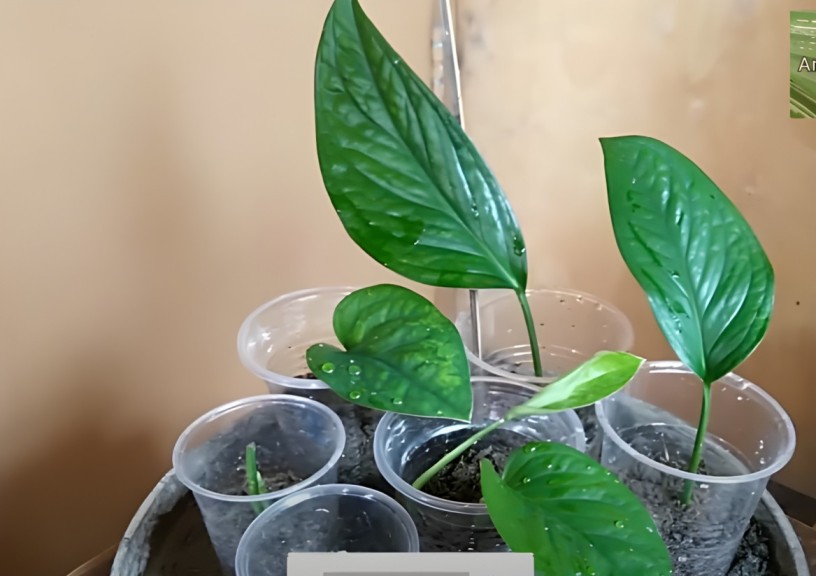
Placement and Care
You can propagate Monstera plant from seed by transplanting it into a bright, indirect light location and allowing the soil to dry slightly between waterings.
Additional Tips for Successful Propagation
- Use sharp, clean tools to prevent damage to the plant.
- Choose healthy, mature stems for propagation.
- Provide adequate light and humidity.
- Maintain consistent soil moisture but avoid overwatering.
- Be patient; rooting can take several weeks.
Potting and Repotting
Proper potting techniques and choosing the right pot are essential for healthy growth.
Pot Selection
- Your plant should be planted in a pot that is one to two sizes larger than its root ball. Plants can be repotted as they grow into larger containers.
- Waterlogging and root rot can be prevented by ensuring the pot has drainage holes.
- Choosing an air-permeable pot can help to promote air circulation around the roots, such as terracotta or unglazed ceramic.
Techniques for potting
- The best potting mix for African violets and aroids is one that drains well.
- Leaving enough space for the root ball, fill the pot with potting mix.
- The Monstera-pinnatipartita should be gently placed into the pot, making sure that the roots are spread out and not crowded.
- Pour additional potting mix into the pot and gently firm it around the base of the plant. Drain the drainage holes thoroughly after watering.
How to Repotting Procedures
Repotting your Monstera as it grows will allow its roots to expand and provide it with fresh soil. To repot your plant follow these steps:
Repotting signs for monsteras include
You’ll know your Monstera plant needs a new home if it begins to grow roots out of the drainage holes in the pot.
Plants need more space to hold moisture if they drain water quickly through their pots.
The growth of your Monstera may be hindered by slow growth or stunted leaves.
Pot Selection
The diameter of the pot should be 2-3 inches larger than the current one.
To prevent waterlogging, the pot should have several drainage holes.
A good choice for pots is terracotta since it breathes well.
Process of repotting
- If you are planning to repot your Monstera, water the soil thoroughly the day before you begin.
- You will need to loosen the roots of the Monstera once it has been removed from its container.
- Putting the New Pot Together: Fill the new pot with potting mix.
- Make sure the Monstera roots are evenly distributed in the new pot.
- Fresh potting mix should be added to the pot, gently firming it around the plant as you fill it.
- Repotting Monsteras requires thorough watering and indirect light.
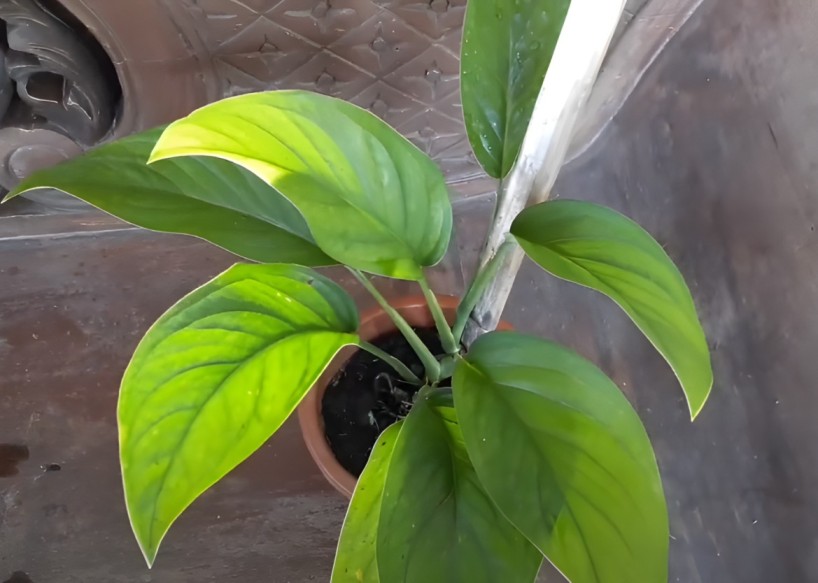
Identification and Description
Habit of Growth
Hemiepiphytes start life as terrestrial plants but later become climbers. It reaches impressive heights by attaching its aerial roots to trees and other structures in its natural habitat.
Indoor Growth
Typically, Monstera-pinnatipartita reaches 4-6 feet in height when grown indoors. If given the right care and support, it is possible for it to grow much taller.
Encourage the growth of your Monstera by providing a sturdy moss pole or trellis.
Leaf Size and Shape
The giant, deeply lobed leaves of Monstera-pinnatipartita can reach a size of 2 feet by 1 foot. Adding drama and sophistication to a room is easy with these leaves because of their distinctive perforations.
Leaf Characteristics
These leaves undergo a remarkable transformation as the plant matures, adding to its captivating charm.
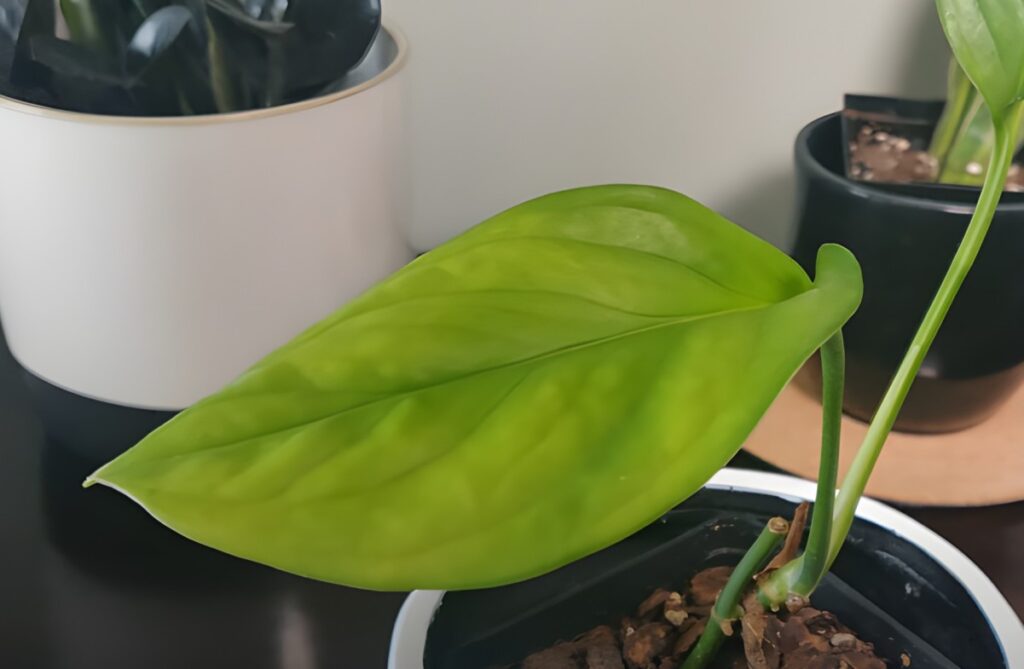
Juvenile Leaves
During the juvenile stage, Monstera-pinnatipartita has heart-shaped leaves that are slightly bumpy and decorated with a silvery pattern. The plant’s young leaves exude a unique charm, reflecting its early stage of development.
Mature Leaves
Plants with pinnatipartita produce leaves that are deep fenestrated as they mature. Maturity leaves have elongated lobes almost to the midrib, which make them larger than their juvenile counterparts.
The fenestrations, or holes, enhance the beauty of the plant by adding visual interest and allowing light to pass through.
Texture and Color
There is a leathery texture to Monstera-pinnatipartita leaves, which makes them durable and resilient. There are greens on the top of the leaves and medium greens on the underside, adding depth to the foliage.
Fenestrations (Leaf Structure)
Leaves of Monstera plant contain fenestrations that are not just aesthetically pleasing, but they serve a much more practical function as well.
Light penetrates through these holes, promoting photosynthesis in lower leaves. Plants in dense rainforest habitats can maximize light utilization through this adaptation.
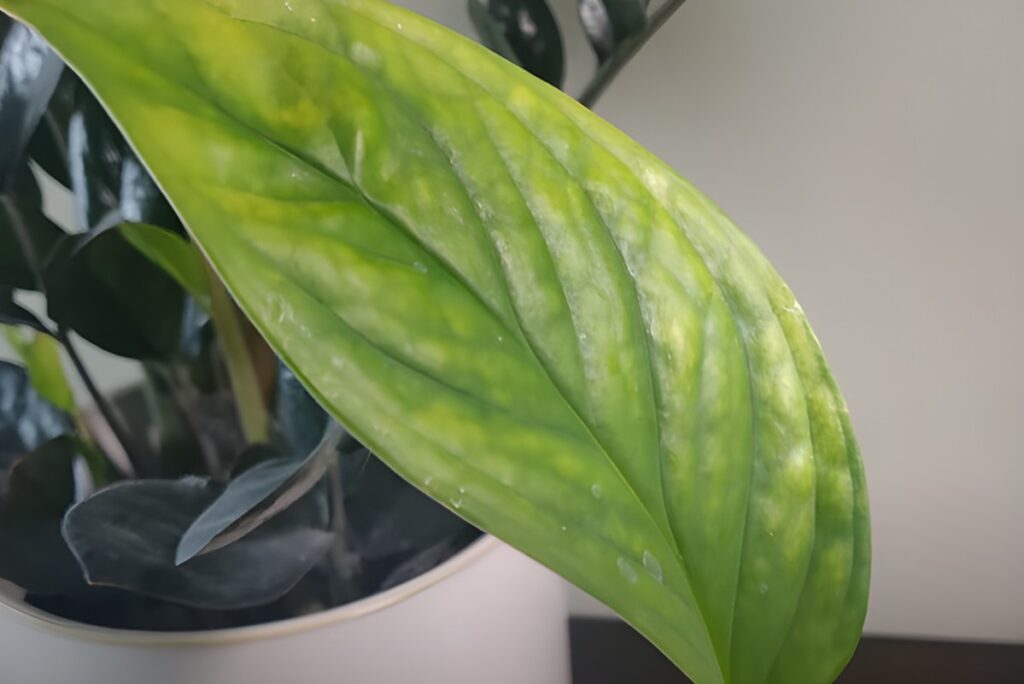
Common Diseases
Bacterial Leaf Spot: Usually brown or yellow with a halo, this disease spreads rapidly under humid conditions. To prevent it, make sure there is adequate air circulation and do not overwater.
Fungal Leaf Spot: Known for its velvety texture, fungus leaf spots typically appear as brown or black spots. Make sure the leaves are properly drained and avoid splashing water on them.
Root Rot: Excessive soil moisture leads to root decay and wilting leaves due to root rot. Choose a well-draining potting mix to prevent root rot, and water only once the top inch of soil is dry.
Common Pests
Mealybugs: This species of white insect gathers on the undersides of leaves to drink sap and leave a sticky residue. Insecticidal soap and neem oil can be used to eliminate mealybugs.
Spider Mites: These microscopic pests cause yellowing and stippling of leaves by forming fine webs on the underside. The best way to control spider mites is to use a strong stream of water or insecticidal soap.
A scale insect is a small, brown bump visible on plants’ stems and leaves. Insecticide soap can be applied to the plant to prevent further infestation after swabbing the scale insects with cotton swabs soaked in rubbing alcohol.
Treatment Options
Organic Solutions
Neem Oil: This natural pest repellent is effective against common houseplant pests like mealybugs, spider mites, and scale insects.
Soap and Water Spray: Effectively removes dust and pests from plant leaves.
Garlic Spray: Used to combat fungal diseases, garlic spray is a natural fungicide.
Commercial Treatments
- Insecticidal Soap: A stronger option for treating stubborn pests.
- Horticultural Oil: Effective against a wide range of pests, including spider mites, mealybugs, and scale insects.
- Fungicide: Specifically formulated to combat fungal diseases.
Common Problems and Solutions
Here are some of the most common problems that Monstera-Pinnatipartita owners may encounter and how to solve them.
Problem: Drooping Leaves
Possible Causes
- Overwatering
- Underwatering
- Root rot
- Lack of humidity
Solutions
- Water the plant thoroughly if the soil is bone dry. If the soil is wet, let it dry out before watering again.
- A drainage-holed pot will improve drainage for the plant.
- Winter is a time when watering should be reduced.
- Plants should be misted regularly or placed in water-filled pebble trays to increase humidity.
Problem: Yellowing Leaves
Possible Causes
- Nutrient deficiency
- Overwatering
- Too much direct sunlight
Solutions
- A balanced liquid fertilizer should be applied regularly to the plant.
- Before watering again, check the soil moisture level. If the soil is soggy, allow it to dry out.
- It is best to move the plant to an area with bright, indirect light.
Problem: Brown Spots on Leaves
Possible Causes
- Fungal infection
- Bacterial infection
- Too much direct sunlight
Solutions
- Keeping the plant isolated from other plants will prevent infection from spreading.
- Fungicides and bactericides should be used on the plant.
- It is best to move the plant to an area with bright, indirect light.
Problem: Pests
Possible Causes
- Mealybugs
- Spider mites
- Scale insects
Solutions
- Ensure that the plant is pest-free by inspecting it regularly.
- A soap or oil containing insecticidal properties can be used on the plant if pests are found.
- Alternatively, you could make your own pest spray using neem oil or soap.
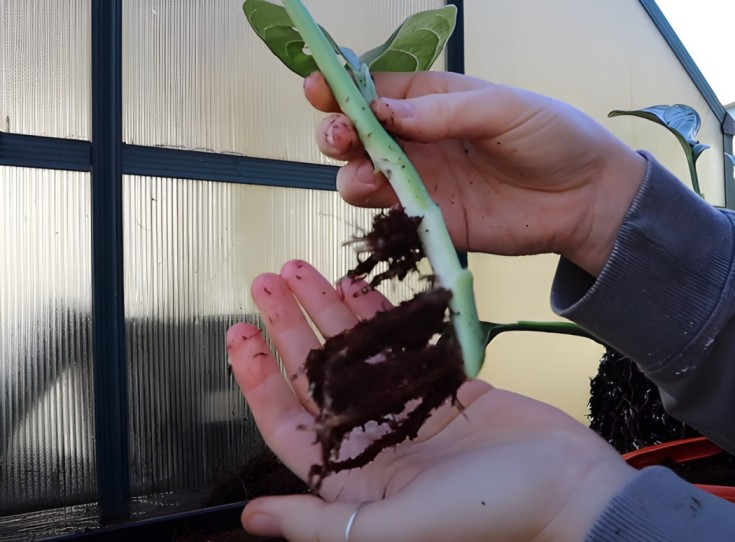
Pinnatipartita Varieties
Monstera-Pinnatipartita ‘Borsigiana’
As well as being able to grow up to two feet in length, the leaves are deeply lobed, creating a graceful, cascading effect. This variety has elongated and slightly curved lobes.
In addition to flourishing in bright, indirect light, ‘Borsigiana’ thrives in moist soil.
Monstera-Pinnatipartita ‘Aurea’
Known for its vivid yellow variegation ‘Aurea’ is a highly sought-after variety. This delicate beauty thrives in warm, humid environments and well-draining soil.
It has patches of creamy yellow on its leaves, adding a touch of sophistication and exoticism to any room.
Monstera-Pinnatipartita ‘Albo-Variegata’
The bold white variegation of ‘Albo-Variegata’ makes it another rare and highly prized variety.
In contrast to the deep green foliage, the leaves are adorned with large, irregular patches of white, creating a striking contrast. It thrives in bright, indirect light and humid conditions.
Monstera-Pinnatipartita ‘Silver Queen’
In addition to its shimmering silvery-green foliage, ‘Silver Queen’ is known for its apt name.
An elegant variety, this plant prefers bright, indirect light, moist, well-draining soil, and iridescent leaves, giving it a nearly otherworldly appearance.
Monstera-Pinnatipartita ‘Esqueleto’
As a result of its deeply fenestrated leaves, this unique variety is distinctive.
A conversation starter in any home, ‘Esqueleto’ thrives in bright, indirect light and moist soil with deep lobes that give a skeletal-like appearance.
Toxicity of Monstera-pinnatipartita
Toxicity for Pets: Despite its attractive appearance, cats and dogs should be aware of this plant’s potential toxicity.
The calcium oxalate crystals in Pinnatipartita plant are common in many plants and can irritate and aggravate pets if ingested.
Excessive drooling, vomiting, difficulty swallowing, burning or swelling in the mouth are all symptoms of ingestion. Symptoms of severe ingestion include respiratory problems and cardiac arrhythmias.
The Monstera-Pinnatipartita must be kept out of the reach of your pets in order to protect them. You should place the plant on high shelves or in hanging planters and supervise pets closely when they are near the plant.
You should contact your veterinarian immediately if any part of the plant has been consumed by your pet.
Toxicity for Human: It contains calcium oxalate crystals that can cause digestive discomfort and skin irritation when consumed.
Children and pets are particularly at risk
- Skin contact: Sap from the plant can irritate, redden, and itch the skin.
- Ingestion: Plant material ingested even small amounts can cause throat and mouth burns, swelling, and vomiting.
Prevention is key
- Place the plant on high shelves or in a secure room to keep children and pets away.
- Protect your skin from irritation by wearing gloves when handling plants.
- Make sure children wash their hands after touching plants to avoid putting them in their mouths.
Comparison With Other Species
Monstera-Pinnatipartita vs. Monstera Peru
| Feature | Monstera-Pinnatipartita | Monstera Peru |
| Leaf Shape | Pinnately lobed | Entire, heart-shaped |
| Leaf Size | Medium to large | Medium to large |
| Leaf Texture | Glossy | Matte, velvety |
| Growth Habit | Climbing | Bushy, compact |
| Native Region | South America | Central and South America |
| Aerial Roots | Yes | Yes |
| Unique Features | Intricate leaf lobes | Unique hole patterns |
Monstera-Pinnatipartita vs. Monstera Deliciosa
| Feature | Monstera-Pinnatipartita | Monstera Deliciosa |
| Leaf Shape | Pinnately lobed | Entire, split |
| Leaf Size | Medium to large | Large to very large |
| Leaf Splitting Pattern | Lobed | Split along the midrib |
| Growth Habit | Climbing | Climbing, can be bushy |
| Fruit Edibility | Not typically edible | Edible (when ripe) |
| Aerial Roots | Yes | Yes |
| Popular as Houseplant | Yes | Yes |
Uses or Benefits
- Enhances Indoor Air Quality
- Reduces Stress and Boosts Mood
- Adds a Touch of Tropical Elegance to Your Home
- Easy to Care for and Low Maintenance
- Provides a Climbing Structure for Other Plants
Global Cultivation and Reach
In the lush landscapes of Australia and New Zealand, the enchanting pinnatipartita plant thrives, showcasing its diverse features. Whether sourced from local nurseries or online marketplaces like OLX, the popularity of this plant extends to places like Peru and even the beautiful land of Pakistan.
As this tropical beauty matures, it reveals its distinct form and growth rate, posing questions about how long it takes a Monstera-pinnatipartita to reach full maturity.
Caring for this type of plant is becomes an art, with enthusiasts sharing tips on proper care, potting techniques, and maintenance. The plant’s diverse varieties, such as monstera aureopinnata vs pinnatipartita, lead to lively debates among plant aficionados.
The differences between Monstera peru and pinnatipartita, or the comparison of Monstera-pinnatipartita vs deliciosa, add to the intrigue.
Propagation and pruning become essential aspects of nurturing this green companion, where the secrets of how to propagate pinnatipartita plant are shared among plant enthusiasts, along with insights into pruning techniques to ensure optimal growth.
Enthusiast’s Guide: Artful Care, Varieties, and Challenges
With its unique appearance and characteristics showcased through vibrant flowers, fruits, and variegated leaves Monstera-pinnatipartita becomes a fascinating subject. The plant’s specific features, like its size, color variations, and the occurrence of yellowing, contribute to its allure.
As we explore Monstera-pinnatipartita’s distinct qualities, its relevance is emphasized in a broader context, considering its comparison with other plants like Monstera xanadu or Philodendron pinnatipartita.
Amidst the captivating beauty, there is an awareness of potential challenges, from common problems like brown edges or yellowing leaves to the significance of safety and toxicity in Monstera care.
In these shared spaces of knowledge, whether discussing general information, growth rates, or specific features, the global community of Monstera enthusiasts continues to cultivate a passion for these captivating plants.
Conclusion
In summary, Monstera-Pinnatipartita, introduced to Europe in the 19th century, has become a symbol of mid-century modern design. Thriving in warm rainforests, it brings unique beauty to homes globally.
To care for this botanical gem, provide bright, indirect light, water seasonally, and use well-draining soil. Embrace pruning and propagation methods for optimal growth.
With stunning varieties like ‘Aurea’ and ‘Silver Queen,’ this captivating plant transforms spaces into tropical havens, ensuring a thriving centerpiece for plant enthusiasts.
FAQs
Is Monstera pinnatipartita rare?
Yes, this plant is a rare plant.
What is the difference between Monstera Peru and Monstera Pinnatipartita?
Several species of Monstera exist, including Monstera Peru and Monstera-Pinnatipartita. Monstera Peru has smaller leaves with heart-shaped edges, whereas Monstera-Pinnatipartita has larger leaves with deep lobed edges.
Is Monstera pinnatipartita a climber or crawler?
The species of this plant climbs trees and other structures using aerial roots.
What is the common name for Monstera pinnatipartita?
The common name for this plant is the Philodendron Silver Queen.
What is Monstera pinnatipartita?
Pinnatipartita plant is a climbing plant with large, deeply lobed leaves that are native to Central and South America.
How to identify Monstera pinnatipartita?
Large, deeply lobed leaves make Monstera-pinnatipartita easy to identify. The leaves may look green or white or cream if they are variegated with white.
How to grow Monstera pinnatipartita indoors?
During the spring and summer growing seasons, this plant should be fertilized monthly with bright, indirect light and moist soil.
How to grow Monstera pinnatipartita outdoors?
Plant it in a well-drained location and water it regularly, but protect it from frost. Monstera-pinnatipartita can also be grown outdoors, but it should be protected from frost.
How fast does Monstera pinnatipartita grow?
This type of plant can grow quickly, especially in warm, humid conditions. It can reach up to 10 feet tall.
How tall does Monstera pinnatipartita grow?
It can grow up to 10 feet tall.
How to make Monstera pinnatipartita grow faster?
During the spring and summer growing seasons, fertilize your Monstera-pinnatipartita monthly. Keep it moist, but not soggy. Repot your plant every two to three years.
How to stake Monstera pinnatipartita?
It is a climber, so it will need a stake to support its growth. Use a moss pole or a wooden stake.
How to revive Monstera pinnatipartita?
A few things you can do to revive Monstera-pinnatipartita if it looks wilted or droopy are to give it more water, light, and fertilizer.
Why is my Monstera pinnatipartita dying?
You might be losing your pinnatipartita plant for several reasons. It might be too dry, it might not have enough light, it might be overwatered, or it might be infested with pests.
Why is my Monstera pinnatipartita drooping?
You might see your Monstera-pinnatipartita drooping for a couple of reasons. It might not get enough water. It might not get enough light. It might be overwatered.
How cold can Monstera pinnatipartita tolerate?
This plant can tolerate temperatures down to 50 degrees Fahrenheit.
Is Monstera pinnatipartita toxic to cats and dogs?
Yes, it is toxic to cats and dogs. The leaves and stems can cause vomiting, diarrhea, and irritation of the mouth and throat.
Is Monstera pinnatipartita toxic to humans and children?
Yes, it is toxic to humans and children. The leaves and stems can cause vomiting, diarrhea, and irritation of the mouth and throat.
Does Monstera pinnatipartita have a scent?
No, this plant does not have a scent.
Can Monstera Pinnatipartita live in water?
Yes, it can live in water. However, it is important to change the water regularly to prevent root rot.
How do I get my Monstera Pinnatipartita to climb?
To get your Monstera-Pinnatipartita to climb, you can provide it with a moss
Is Monstera Pinnatipartita the same as Split Leaf Philodendron?
There is no similarity between Monstera-pinnatipartita and Split Leaf Philodendron. Both of these popular houseplants have similar-looking leaves, but they are in different plant families.
Araceae is the family that encompasses Monstera-pinnatipartita, while Araceae also encompasses Split Leaf Philodendrons.
How do you grow Monstera Pinnatipartita to look bushy?
A moss pole or trellis is a good support for Pinnatipartita plant so it can grow thick and bushy. It needs bright, indirect light, plenty of water, and fertilizer monthly during its growing season.
It’s important to fertilize your this plant once a month during spring and summer, using a balanced liquid fertilizer diluted half strength.
What is the Monstera pinnatipartita price?
Plants with different sizes and pots cost different amounts. A small Pinnatipartita, for example, can cost as little as $10, while a large Pinnatipartita, for example, can cost as much as $100.
Where do I buy Monstera pinnatipartita?
There are many places online and offline where you can buy Monstera-pinnatipartita. Popular places include Etsy, Amazon, and home improvement shops.
How long does it take for Monstera Pinnatipartita to mature?
Monstera-pinnatipartita can mature in 3-5 years depending on the care it receives. In general, this plant matures in 3-5 years.

